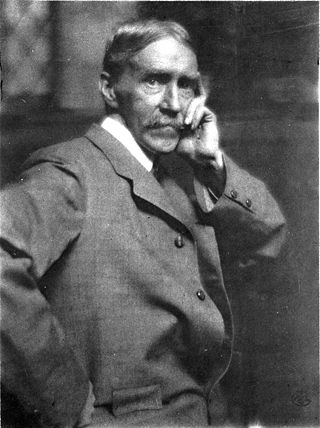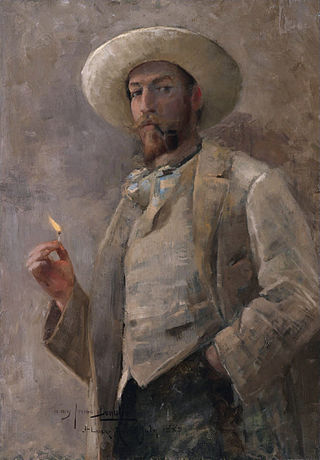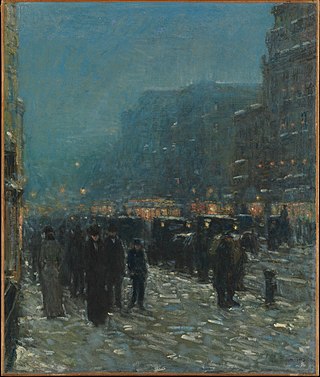
Oscar-Claude Monet was a French painter and founder of impressionist painting who is seen as a key precursor to modernism, especially in his attempts to paint nature as he perceived it. During his long career, he was the most consistent and prolific practitioner of impressionism's philosophy of expressing one's perceptions before nature, especially as applied to plein air (outdoor) landscape painting. The term "Impressionism" is derived from the title of his painting Impression, soleil levant, exhibited in 1874 initiated by Monet and his associates as an alternative to the Salon.

Impressionism was a 19th-century art movement characterized by relatively small, thin, yet visible brush strokes, open composition, emphasis on accurate depiction of light in its changing qualities, ordinary subject matter, unusual visual angles, and inclusion of movement as a crucial element of human perception and experience. Impressionism originated with a group of Paris-based artists whose independent exhibitions brought them to prominence during the 1870s and 1880s.

American Impressionism was a style of painting related to European Impressionism and practiced by American artists in the United States from the mid-nineteenth century through the beginning of the twentieth. The style is characterized by loose brushwork and vivid colors with a wide array of subject matters but focusing on landscapes and upper-class domestic life.

Maurice Brazil Prendergast was an American artist who painted in oil and watercolor, and created monotypes. His delicate landscapes and scenes of modern life, characterized by mosaic-like color, are generally associated with Post-Impressionism. Prendergast, however, was also a member of The Eight, a group of early twentieth-century American artists who, aside from Prendergast, represented the Ashcan School.

Frederick Childe Hassam was an American Impressionist painter, noted for his urban and coastal scenes. Along with Mary Cassatt and John Henry Twachtman, Hassam was instrumental in promulgating Impressionism to American collectors, dealers, and museums. He produced over 3,000 paintings, oils, watercolors, etchings, and lithographs over the course of his career, and was an influential American artist of the early 20th century.

Memphis Brooks Museum of Art is an art museum in Memphis, Tennessee. The Brooks Museum, which was founded in 1916, is the oldest and largest art museum in the state of Tennessee. The museum is a privately funded nonprofit institution located in Overton Park in Midtown Memphis.

Water Lilies is a series of approximately 250 oil paintings by French Impressionist Claude Monet (1840–1926). The paintings depict his flower garden at his home in Giverny, and were the main focus of his artistic production during the last thirty years of his life. Many of the works were painted while Monet suffered from cataracts.

The Florence Griswold Museum is an Art Museum at 96 Lyme Street in Old Lyme, Connecticut centered on the home of Florence Griswold (1850–1937), which was the center of the Old Lyme Art Colony, a main nexus of American Impressionism. The Museum is noted for its collection of American Impressionist paintings. The house was designated a National Historic Landmark in 1993. The site encompasses 12-acres of historic buildings, grounds, gardens, and walking trails.

Colin Campbell Cooper, Jr. was an American impressionist painter of architectural paintings, especially of skyscrapers in New York City, Philadelphia, and Chicago. An avid traveler, he was also known for his paintings of European and Asian landmarks, as well as natural landscapes, portraits, florals, and interiors. In addition to being a painter, he was also a teacher and writer. His first wife, Emma Lampert Cooper, was also a highly regarded painter.

The Garden at Sainte-Adresse is a painting by the French impressionist painter Claude Monet.. The painting was acquired by the Metropolitan Museum of Art after an auction sale at Christie's in December 1967, under the French title La terrasse à Sainte-Adresse. The painting was exhibited at the 4th Impressionist exhibition, Paris, April 10–May 11, 1879, as no. 157 under the title Jardin à Sainte-Adresse.

Cliff Rock - Appledore is an oil painting by American artist Childe Hassam, painted in 1903. It is part of the permanent collection at the Indianapolis Museum of Art.

Allen Butler Talcott was an American landscape painter. After studying art in Paris for three years at Académie Julian, he returned to the United States, becoming one of the first members of the Old Lyme Art Colony in Connecticut. His paintings, usually landscapes depicting the local scenery and often executed en plein air, were generally Barbizon and Tonalist, sometimes incorporating elements of Impressionism. He was especially known and respected for his paintings of trees. After eight summers at Old Lyme, he died there at the age of 41.

Gaines Ruger Donoho was an American painter.

Lydia Crocheting in the Garden at Marly is an oil-on-canvas painting by Mary Cassatt created in 1880. It is in the collection of the Metropolitan Museum of Art.

July Fourteenth, Rue Daunou, 1910 is an early-20th-century painting by American impressionist Childe Hassam. Done in oil on canvas, the painting depicts the celebration of Bastille Day in Paris. It is now in the Metropolitan Museum of Art.

Surf, Isles of Shoals is a 1913 painting by the American Impressionist painter Childe Hassam. Done in oil on canvas, the work depicts the rugged New England shoreline near Portsmouth, New Hampshire. The painting is currently in the collection of the Metropolitan Museum of Art.

Coast Scene, Isles of Shoals is a 1901 painting by the American Impressionist painter Childe Hassam, which is in the collection of the Metropolitan Museum of Art.

Broadway and 42nd Street is a 1902 painting by the American Impressionist painter Childe Hassam. It is part of the collection of the Metropolitan Museum of Art.

Spring Morning in the Heart of the City is an 1890 oil-on-canvas painting by the American Impressionist artist Childe Hassam which is in the collection of the Metropolitan Museum of Art in New York city.



















